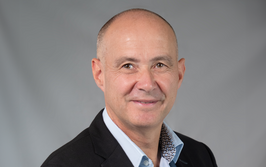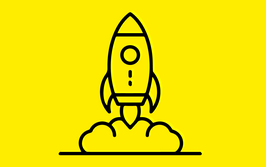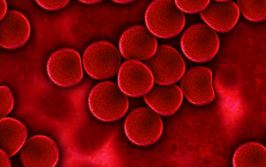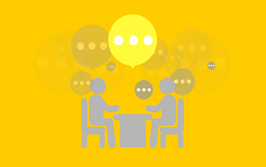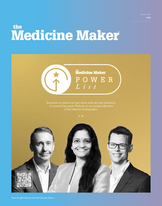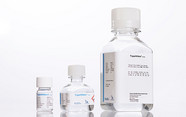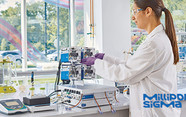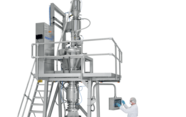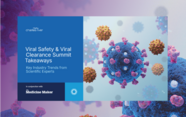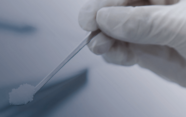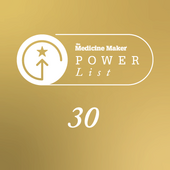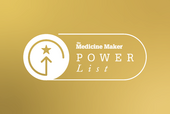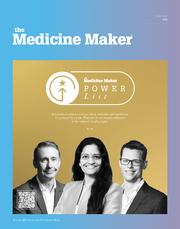The Blood Cancer Success Story: Part 1
Lore Gruenbaum tells us about her career spanning big pharma, biotech and now The Leukemia & Lymphoma Society; because there are some goals you can only accomplish in a not-for-profit environment.
Stephanie Vine | | 7 min read | Interview

Meet Lore Gruenbaum. She’s worked in both big pharma and biotech, but today is the Chief Scientific Officer of The Leukemia & Lymphoma Society (LLS). “I started to learn more about the organization and became increasingly convinced that it was the perfect place for me to apply everything I had learned. It offered me a unique opportunity to do the things I really wanted to do that I couldn't make happen in the for-profit world.”
We had the opportunity to speak with Gruenbaum about her career and the inspirational work of LLS in pushing key advances in blood cancer research and treatment. LLS has helped advance more than 70 percent of FDA-approved therapies, including Yescarta.
My conversation with Gruenbaum was in depth, so we’ve split publication into two parts. Here in part 1, we discuss her career and the key lessons she has learned.
What key moments shaped your decision to pursue a career in science?
I come from a family full of artists, musicians, and writers. But in high school, I was exposed to chemistry for the first time as a subject. I had a wonderful chemistry teacher who really sparked my interest and curiosity. It was a huge surprise – not only to me but to my entire family! It ultimately led to my decision to study biochemistry.
A second key moment that really shaped my career was an internship I did in Germany during what would be the equivalent of college. Fluorophores had been discovered and were starting to be applied in drug development. I had the incredible opportunity to work in an industry lab using calcium fluorophores. I was very excited by the work, and it made me want to do real drug discovery.
I think what really fascinated me was understanding how cells communicate with each other and being able to see that in real time. It opened up this bigger picture of what happens inside an individual cell, within a circuit, and at the level of an organ. To me, that relationship – from the tiniest molecule all the way to the entire organism – is essential when developing new medicines.
What I love about my job now is that I also get to work at the other end of the process. I speak to patients, hear about their experiences, and then bring that information back to scientists.
What lessons did you learn early on in your career with the pharma industry?
My current work benefits tremendously from what I learned early on. I always tell people that pharma is an incredible training ground. You work with teams of experts who know every single aspect of drug discovery and development, so it gives you a chance to learn from the best and to evolve your career in many different directions. I benefited greatly from starting out at the very basic level of bringing new technologies into drug discovery, which was my first job. Many years later, I became deeply involved in clinical trials, including those for registration and post-registration.
Another important lesson you can learn in the industry is effective teamwork in a global, cross-functional setting. This skill is still invaluable in my work today.
How did you join LLS?
My first contact with hematology and blood cancer came during my postdoc at Yale University. I’ve always been curious about other fields, so even though I was working on neuroscience at the time, I attended a talk on blood cancer and heard about a protein that looked really promising. This led me to work in the university’s department of hematology, collaborating with researchers in both basic science and neuroscience.
Later, while in industry, I had the opportunity to work with Gwen Nichols, LLS’s current chief medical officer, in translational medicine. When she left industry to join LLS, I was intrigued. By that time, I had accumulated substantial experience in both pharma and biotech, and knew from first-hand experience how impactful this work had been and could be in the future. But I still felt that there were some unmet patient needs that could best be addressed by nonprofit organizations.
As Gwen was getting her first experiences at LLS, I started to learn more about the organization and became increasingly convinced that it was the perfect place for me to apply everything I had learned. It offered me a unique opportunity to do the things I really wanted to do that I couldn't make happen in the for-profit world.
Biotech and big pharma are different. How was your experience of the two worlds?
Biotech is a completely different world from pharma. I spent almost as much time in biotech as I did in big pharma, and I learned very different lessons.
One of the reasons I wanted to move into biotech after pharma was that, like many others, I was somewhat frustrated with the slower pace in a big organization. There’s a lot of red tape, and decision-making can take time. I wanted to be at the forefront of innovation, and pharma tends to be a bit more risk averse. Biotech, however, offers a chance to work on higher-risk, novel ideas often coming out of academia. That being said, you often depend on investors to fund you, and you have to deliver results quickly. As a result, you may not always have the time to do the full homework on developing a new drug the ideal way.
I learned in biotech that you need to be extremely creative and pragmatic. You often have limited resources, so improvisation is required. You have to do more with less, and it forces you to wear many different hats. I led not just a scientific team but was also involved in business development. In one instance, when our small team started to grow, I had to step in and co-write the employee handbook. And I might even try and fix the copy machine that kept breaking down!
That spirit of doing what needs to be done without hesitation is something I’ve carried into my current role at LLS, especially in terms of leading their venture philanthropy program. We have a small team, and everyone chips in to get things done without worrying too much about job descriptions. It’s all about pulling together as a team.
There are incredible things happening in both pharma and biotech, but I believe nonprofits play a unique role that can complement both. They can help drive the whole ecosystem forward and achieve more.
What does LLS focus on?
LLS has been funding research since 1949. We celebrated our 75th anniversary in 2024. We are the second-largest funder of blood cancer research worldwide, after the US government. We fund research from basic discovery to translational work, including clinical trials and beyond, by offering grants.
But we’ve also recognized that to truly make a difference, we need to play an active role in development, which is why we created the Therapy Acceleration Program (TAP). TAP takes lessons from venture capital. We invest in companies and form partnerships, driven by where we think the most value can be created – first and foremost for patients rather than just financial returns. We believe that if you listen to patients and are smart about the science, you can see significant returns, both in terms of funding and advancing your mission.
We also co-sponsor and sponsor trials – and even run some trials ourselves. This hands-on experience ensures that trials we support are executed. We help our partners design trials that make the most sense for patients and have the highest likelihood of success.
All the work that we do is interconnected. We want to feed the knowledge and learnings from each area back into the entire field of blood cancer research, strengthening the work we do across the board.
Part 2 of this interview focuses on the work of LLS, including success stories and research gaps.
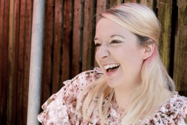
Making great scientific magazines isn’t just about delivering knowledge and high quality content; it’s also about packaging these in the right words to ensure that someone is truly inspired by a topic. My passion is ensuring that our authors’ expertise is presented as a seamless and enjoyable reading experience, whether in print, in digital or on social media. I’ve spent fourteen years writing and editing features for scientific and manufacturing publications, and in making this content engaging and accessible without sacrificing its scientific integrity. There is nothing better than a magazine with great content that feels great to read.

